
Trace fossils are "prints and poop"—evidence of a living thing's interaction with its environment, without any part of the actual organism. Footprints, trackways, swim traces, burrows or dens, root traces, and even coprolites (fossil feces) are examples of trace fossils. Trace fossils provide indirect evidence in the form of structures created by animals and plants while they are alive.
Trace Fossils are valuable because they offer a number of clues about past geologic environments. Because animal behaviors change more slowly than animal species, many trace fossils are relatively stable and can be compared over longer intervals of time than body fossils. This allows scientists to see, on the basis of animal behavior, similarities among geologic environments even though the animals living in those environments were fundamentally different. For example, variations in the soil (such as its grain size, amount of organic material, and water content) play an important role in determining the types of behavior available to the animals living in it.
Trace fossils also provide information about precisely where and how organisms lived and behaved--information that would not always be obtainable from body fossil evidence. Dinosaur trackways, for example, can show that certain dinosaurs carried their tails in the air rather than dragging them on the ground. In addition, such trackways provide information about herding behavior in some species and how fast some animals could run. Unlike body fossils, which usually can be transported great distances from where the organisms lived, trackways and burrows do not survive unless the sediments containing them have remained undisturbed. Therefore, trace fossils made in soft sediment that has since been turned to rock--for example, casts of human footprints--provide indisputable evidence that the organism lived in the area where the traces are found. "Fossilization Processes."
Earth Sciences for Students, Macmillan Reference USA, 2008. Gale In Context: Science, https://link.gale.com/apps/doc/CV2640550079/SCIC?u=vero31952&sid=SCIC&xid=a75d51d3. Accessed 7 Dec. 2020.

Trace fossils from the upper surfaces of amalgamated grainstone beds.
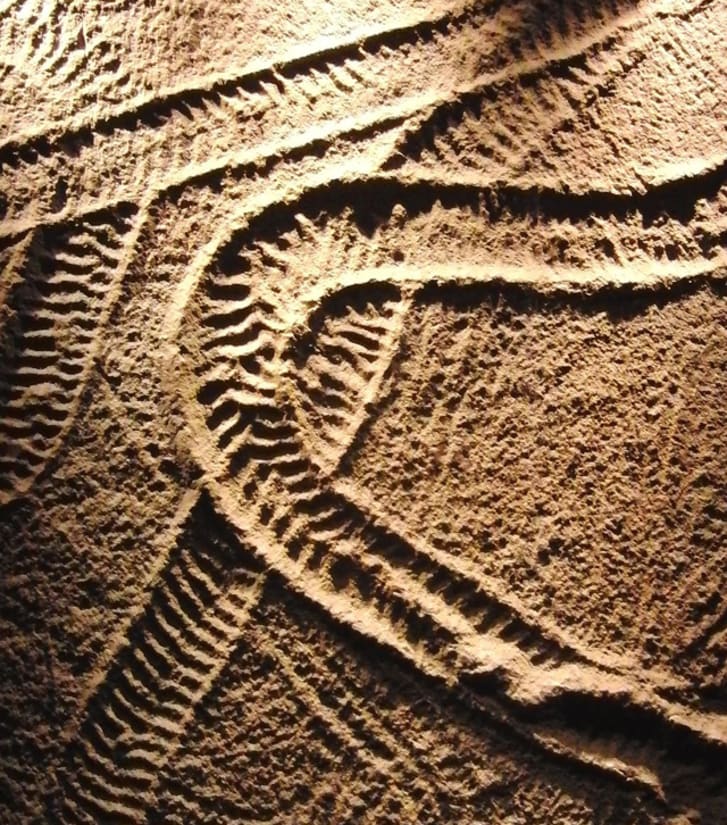
A great example of a fossilized trackway can be found in the Smithsonian National Museum of Natural History in Washington D. C. Here, visitors can see an eight-foot-tall cast of trackways made by Climactichnites, a two-foot-long slug-like creature.
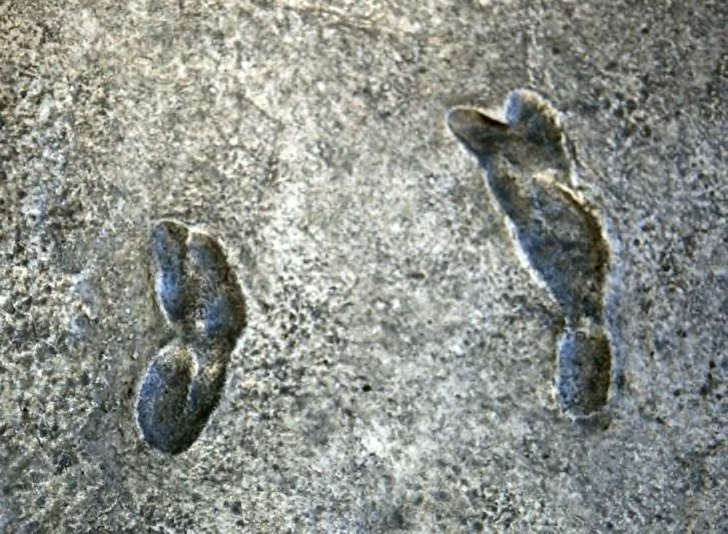
The most famous site containing footprint trace fossils is the Laetoli trackway in Tanzania. Footprints of early hominins from 3.6 million years ago were uncovered here, proving that our early ancestors walked upright.
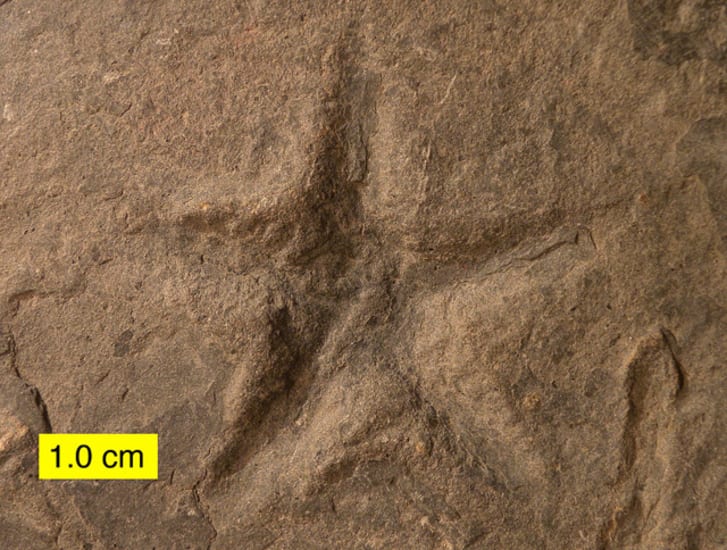
An Asteriacite fossil can be seen at the Peabody Museum of Natural History at Yale University in Connecticut, where they have a world-renowned Invertebrate Zoology department.
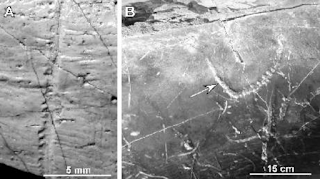
At the La Brea Tar Pits in Los Angeles, visitors can see some amazingly well-preserved Ice Age fossils, with some revealing gnaw marks left by insects and rodents.
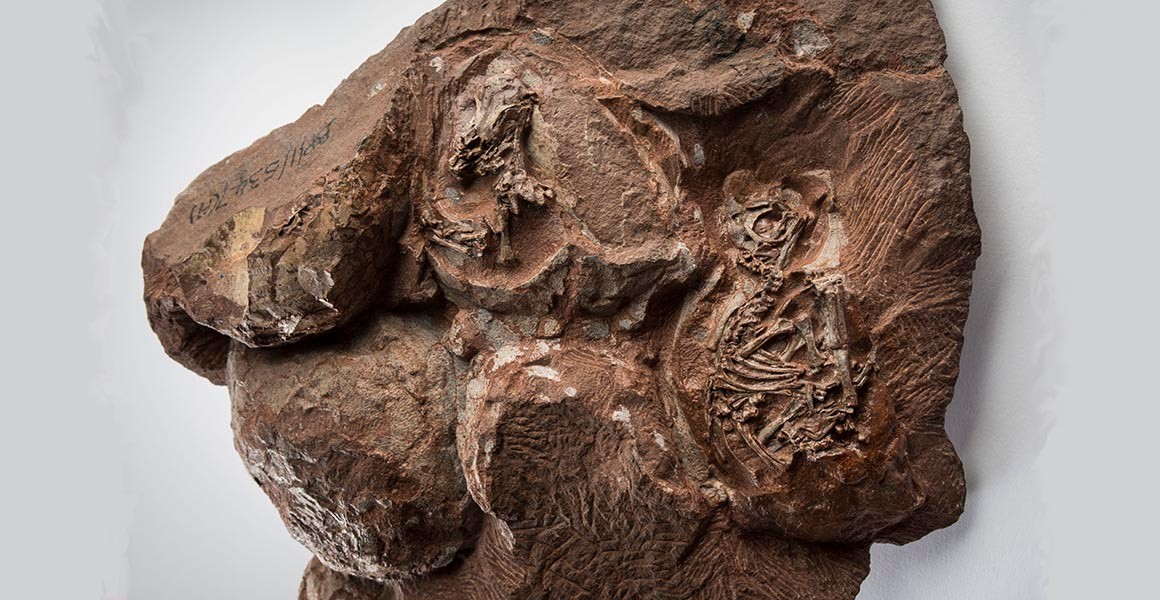
The Natural History Museum in London has the nest of a Protoceratops, a small horned dinosaur, on display. The nest and a clutch of eggs were uncovered in the Gobi desert in Mongolia and are over 80 million years old.

Fossilized Gastropod Tracks. Fossilized tracks (white) of an ancient gastropod (a type of mollusk), preserved in rock.
Trace fossils. Photography. Britannica ImageQuest, Encyclopædia Britannica, 25 May 2016.
quest.eb.com/search/132_1241672/1/132_1241672/cite. Accessed 7 Dec 2020.

The trace fossil, Entobia, A boring made by a sponge into a shell during Cretaceous times has here been infilled with flint.
The trace fossil. Photograph. Britannica ImageQuest, Encyclopædia Britannica, 25 May 2016.
quest.eb.com/search/119_1791659/1/119_1791659/cite. Accessed 7 Dec 2020.

Dinosaur fossil footprint - Fossil trace of a footprint left by a theropod dinosaur from the Late Jurassic (145 to 160 million years ago)
Dinosaur fossil footprint. Photograph. Britannica ImageQuest, Encyclopædia Britannica, 31 Aug 2017.
quest.eb.com/search/132_1492020/1/132_1492020/cite. Accessed 7 Dec 2020.
"Fossilized Feces Tell Tale of Earliest Americans."
All Things Considered, 3 Apr. 2008. Gale In Context: Science, Accessed 15 Jan. 2025.